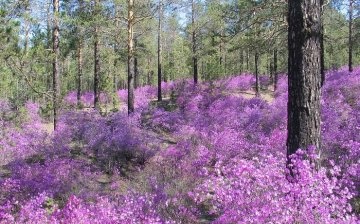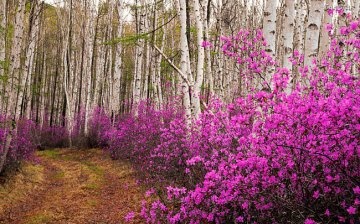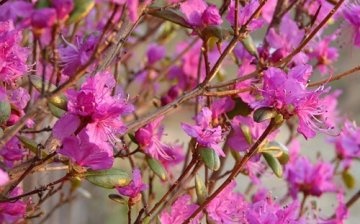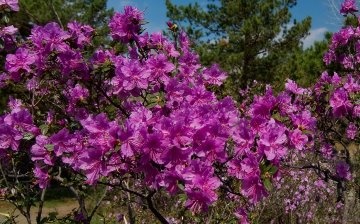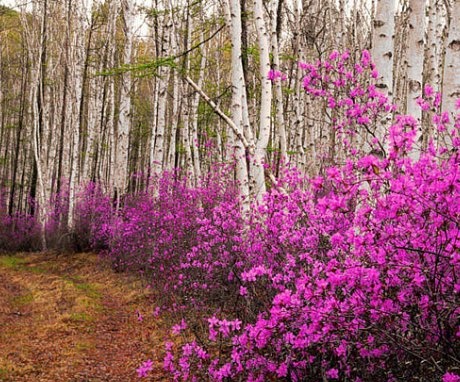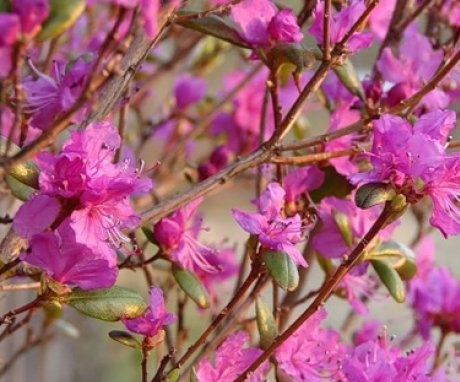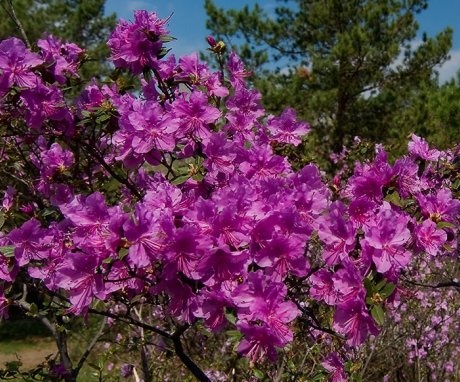Where does the rosemary grow?
Ledum is a poisonous plant and it is from its name that the ancient word "wild rosemary" comes from, which means "poisonous" or "poisonous". Its pleasant aroma beckons, you want to inhale it, and as a result you get a headache. Hunters bypass wild rosemary thickets with the "tenth side", because a hunting dog, sniffing wild rosemary, "gets drunk" and becomes lethargic.
Content:
Where does the rosemary grow?
The answer to this question is given by the words from the song of the same name:
Somewhere wild rosemary blooms on the hills,
Cedars pierce the sky ...
It seems as if it has been waiting for me for a long time
The land where I have never been.
Of course, I mean Siberia and the Far East. Ledum grows in swamps, peat bogs, moss bogs, very often it can be found in wetlands of a coniferous forest with dwarf cedar, not far from blueberry bushes and deciduous woodlands (mainly among shrub birches). Ledum can be found along mountain streams and rivers, on the eastern slopes of the highlands.
Types of wild rosemary
All over the world, only 8 species of wild rosemary are known, four of which grow in Russia:
- Ledum decumbens. Squat shrub up to 30 cm high with dense rusty-pubescent shoots. The leaves are narrow, curled: with a width of 2 mm, the length reaches 25 mm. Small white flowers are collected in inflorescences up to 2 cm in diameter. It blooms in late May and blooms for one month. The annual growth is only 1 cm. It grows in the Khabarovsk and Primorsky Territories, Sakhalin, Kamchatka, the Kuril Islands, the Chukotka Peninsula and the Commander Islands;
- Ledum Hypoleucum. A shrub with straight branches reaches a height of 1.2 m. At first, the shoots are dense, white-pubescent, and then become bare. The leaves are oblong, 3-8 cm long. White flowers are collected in inflorescences in the form of an umbrella. Blooms in June - July. The wild rosemary Podbel grows in the Khabarovsk and Primorsky regions;
- Large-leaved wild rosemary (Ledum makrophyllum). Erect shrub up to 80 cm in height, sometimes up to 1 m. Young shoots are rusty-pubescent, bare over time. Leaves reach 4 cm with a width of 1.5 cm, the edges are slightly curled. It blooms in white from mid-May to mid-June. The annual growth is 4-6 cm. The homeland is the Amur River basin, Sakhalin and Primorye;
- Marsh Ledum (Ledum palustre L). The most common type. An evergreen shrub with a height of 60 cm, rare, but still there are specimens that have reached a height of 1.2 m. Young shoots are rusty-tomentose, well pubescent, and old ones are bare, grayish-brown in color. Roots can reach 40 cm. Leaves are dark green up to 4 cm long, slightly curled downwards. Marsh rosemary has two varieties: one blooms in white, and the other in bright pink. Small flowers are collected in 15-25 pieces in a brush in the form of an umbrella 5 cm in diameter. It blooms in May-June. Marsh rosemary grows not only in Siberia and the Far East, but also on the East European Plain.
Growing wild rosemary
In horticulture, the most popular species is marsh rosemary. If you dig him out of the swamp and plant in the garden, then he will simply die. It is better to purchase wild rosemary in a nursery, where it is already adapted for growing it in the garden.
Landing produced in spring in pits 40 cm deep. If several bushes are planted, then the distance between them should be at least 50 cm. Ledum prefers acidic soil.Before planting, the pit is filled with a soil mixture consisting of sand, coniferous soil and peat in proportions of 1: 2: 3. For drainage, 5 cm of pebbles or sand are poured into the bottom of the hole. After landing soil mulch.
Under natural conditions, wild rosemary feels great on poor soils, but in the garden it still needs feeding. Perform it in the spring with the help mineral fertilizers: for young plantings, about 40 g per 1 m2, and for adult plants - 70 g per 1 m2.
If the summer is hot and dry, then the wild rosemary is watered once a week. The roots of the plant are located very close to the surface of the earth, therefore, after watering, in order to retain moisture, the plant is mulched with peat.
The wild rosemary is propagated by cuttings and seeds. Cuttings held in the summer. Before planting in a box, the cuttings are placed for a day in a solution of heteroauxin, which is prepared as follows: 1 tablet (0.1 g) of the drug is crushed and dissolved in 2.5 liters of water.
By autumn, thanks to the phytohormone, a callus-like mass appears on the lower sections of the cuttings - callus, from which roots grow the next year. Such a long process of root formation and growth of wild rosemary does not always suit gardeners. For this reason, it is believed that growing wild rosemary at home is extremely difficult.
The use of wild rosemary
Ledum is an excellent honey plant, but for humans, honey from it is poisonous, therefore it is used only by bees for the development of their families.
The shoots of wild rosemary are used as medicinal raw materials. An essential oil is obtained from it, which contains tannins, vitamin C, glycosides, flavonoids and a unique substance called ice. Thanks to him, the oil has an antitussive effect and inhibits Staphylococcus aureus and Giardia.
Thanks to its bright flowering, wild rosemary is able to decorate the garden area and please the owners, but provided that it is planted at a certain distance from the recreation area and does not "intoxicate" with its insidious aroma.



